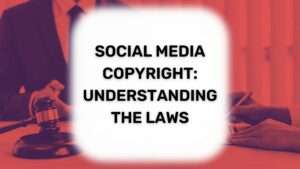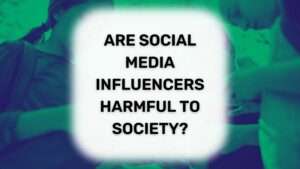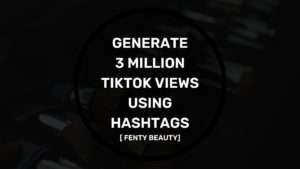Our growing list of essential social media terms. Everything you need to know to help you navigate your everyday social media life.
A – B – C – D – E – F – G – H – I – J – K – L – M – N – O – P – Q – R – S – T – U – V – W – X – Y – Z
A
Analytics: The process of measuring and analyzing data to determine the success of social media campaigns, content, and engagement.
Avatar: A digital representation of a user or brand, often used as a profile picture on social media.
B
Bio: A short description of a user or brand on social media platforms.
Blog: A website or online platform where an individual or organization can share articles, opinions, and other forms of content.
Brand: A set of unique attributes, values, and qualities that define a product, service, or company.
Brand identity: The visual and verbal elements that make up a brand, including logos, colors, fonts, and messaging.
C
Call-to-action (CTA): A prompt or instruction that encourages social media users to take a specific action, such as clicking a link or making a purchase.
Campaign: A strategic plan for promoting a product, service, or message on social media.
Caption: The text accompanying a social media post that provides additional context, information, or humor.
Carousel: A type of social media post that features multiple images or videos that users can swipe through.
Chatbot: An automated tool that uses artificial intelligence to interact with users on social media platforms, often used for customer service or support.
Click-through rate (CTR): The percentage of users who click on a link or call-to-action in a social media post.
Community management: The process of engaging with and managing a brand’s social media followers and fans.
Content: Any form of media, including text, images, videos, and audio, created and shared on social media platforms.
Conversion rate: The percentage of users who take a desired action, such as making a purchase or signing up for a newsletter.
D
Dark social: Refers to the sharing of content through private channels, such as direct messages, email, or text messages, making it difficult to track and measure.
Direct message (DM): A private message sent between users on social media platforms.
E
Engagement: The interaction between users and a brand on social media platforms, including likes, comments, shares, and direct messages.
Engagement rate: The percentage of social media users who interact with a post, typically calculated as the number of likes, comments, and shares divided by the number of impressions.
G
Geotagging: The process of adding a location tag to a social media post, allowing users to see where the content was created.
H
Hashtag: A keyword or phrase preceded by the # symbol, used to categorize and organize social media content.
I
Influencer: A person with a large following on social media who can influence the opinions and behavior of their audience.
Influencer marketing: The practice of partnering with social media influencers to promote a brand or product.
Insights: The data and metrics provided by social media platforms to track the performance of content and engagement.
K
Keywords: Words or phrases used to optimize social media content for search engines and algorithms.
L
Likes: A social media feature that allows users to show their approval of a post or content.
Live video: A real-time video broadcast on social media platforms that allows users to interact with the broadcaster in real-time.
M
Micro-influencer: An influencer with a smaller but highly engaged social media following, typically in a specific niche or industry.
N
News feed (feed): The section of a social media platform where users can see content from accounts they follow and engage with.
O
Organic reach: The number of people who see a social media post without paid promotion or advertising.
P
Paid reach: The number of people who see a social media post as a result of paid promotion or advertising.
Persona: A fictional representation of a brand’s target audience, used to guide marketing and content strategy.
Platform: A social media website or mobile application used to share content and engage with others.
R
Reach: The number of unique users who see a social media post or content.
Reactions: Alternative options to “liking” a post on social media platforms, often including emojis or other visual icons.
S
Scheduling: The process of planning and timing social media posts in advance.
Shares: The act of reposting social media content on a user’s own profile or feed.
Social listening: The process of monitoring social media platforms for mentions, keywords, and sentiment related to a brand or product.
Sponsored post: A social media post that is paid for by a brand or advertiser to promote a product or service.
Story: A type of social media post that features images, videos, or text that disappears after a short period of time, typically 24 hours.
T
Target audience: The specific group of people or demographics that a social media campaign or content is intended to reach.
Trend: A popular topic, style, or behavior on social media platforms that is widely discussed and shared.
U
User experience (UX): The overall experience and satisfaction of users interacting with a brand’s social media content and online presence.
User-generated content (UGC): Content created by social media users, often featuring a brand or product.
V
Viral: A piece of social media content that is widely shared and discussed, often reaching a large audience in a short amount of time.
Viral marketing: A marketing strategy that aims to create viral content that is widely shared and discussed, often using humor or other emotional appeals to engage users.
W
Webinar: An online seminar or workshop, often hosted by a brand or expert, that provides education or training on a specific topic.
Workflow: The sequence of steps or processes involved in completing a task or project.
Wireframe: A visual representation of the layout and structure of a web page or app, typically used in the early stages of design.
Y
Yield: The return on an investment, usually expressed as a percentage of the amount invested.
YouTube: A popular video-sharing website where users can upload, view, and share videos.
Z
Zip file: A compressed archive file format used for combining and compressing multiple files into a single file for easier storage and distribution.



